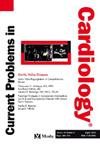Interatrial shunt devices in heart failure with preserved ejection fraction: A meta-analysis of randomized trials
IF 3.3
3区 医学
Q2 CARDIAC & CARDIOVASCULAR SYSTEMS
引用次数: 0
Abstract
Background
The clinical effect of an iatrogenic interatrial shunt in heart failure with preserved ejection fraction (HFpEF) was based on observational data, wherein decompression of the pressure-overloaded left atrium improved symptoms and hemodynamics. However, the identification of a specific patient population that may benefit remains unclear.
Methods
We searched for randomized controlled trials (RCTs) that compared the creation of interatrial shunts versus a sham procedure in patients with HFpEF. The primary outcomes of interest were HF events and Cardiovascular (CV) mortality.
Results
Three RCTs were included, encompassing 966 patients, of which 479 (49.5%) were in the interatrial shunt group. The mean age of the participants was 73.2 years, with an average LVEF of 58.7%. Of the 479 patients undergoing interatrial shunt placement, 69% had exercise hemodynamics to assist in selection for therapy. Interatrial shunt therapy in the selected patients showed a trend towards an increased risk of HF events (RR:1.29;95%CI:0.98-1.70;p=0.069) and CV death (RR:2.30;95%CI:0.94-5.59;p=0.067), compared with the sham procedure.
Conclusion
In this meta-analysis of patients with HFpEF, interatrial shunt therapy showed a trend towards an increased risk of HF events and CV mortality compared with the sham procedure, with no significant improvement in MACE, quality of life, or rates of MI and stroke/TIA. These findings raise concerns about interatrial shunt therapy for the broader HFpEF population and highlight the need for better patient selection.
房间分流装置用于保留射血分数的心力衰竭:随机试验的荟萃分析。
背景:医源性心房分流在保留射血分数(HFpEF)心力衰竭中的临床效果是基于观察数据的,其中压力过载的左心房减压改善了症状和血流动力学。然而,对可能受益的特定患者群体的识别仍不清楚。方法:我们检索了比较HFpEF患者心房分流术和假手术的随机对照试验(rct)。主要研究结果为1例心衰事件和2例心血管(CV)死亡率。结果:纳入3项随机对照试验,共纳入966例患者,其中心房分流组479例(49.5%)。参与者的平均年龄为73.2岁,平均LVEF为58.7%。在接受心房分流安置的479名患者中,69%的患者有运动血流动力学来帮助选择治疗方案。与假手术相比,所选患者的心房分流治疗显示出HF事件(RR:1.29;95%CI:0.98-1.70;p=0.069)和CV死亡(RR:2.30;95%CI:0.94-5.59;p=0.067)增加的趋势。结论:在HFpEF患者的荟萃分析中,与假手术相比,心房分流治疗显示出HF事件和CV死亡率增加的趋势,在MACE、生活质量或MI和卒中/TIA发生率方面没有显著改善。这些发现引起了对心房分流治疗在更广泛的HFpEF人群中的关注,并强调了更好的患者选择的必要性。
本文章由计算机程序翻译,如有差异,请以英文原文为准。
求助全文
约1分钟内获得全文
求助全文
来源期刊

Current Problems in Cardiology
医学-心血管系统
CiteScore
4.80
自引率
2.40%
发文量
392
审稿时长
6 days
期刊介绍:
Under the editorial leadership of noted cardiologist Dr. Hector O. Ventura, Current Problems in Cardiology provides focused, comprehensive coverage of important clinical topics in cardiology. Each monthly issues, addresses a selected clinical problem or condition, including pathophysiology, invasive and noninvasive diagnosis, drug therapy, surgical management, and rehabilitation; or explores the clinical applications of a diagnostic modality or a particular category of drugs. Critical commentary from the distinguished editorial board accompanies each monograph, providing readers with additional insights. An extensive bibliography in each issue saves hours of library research.
 求助内容:
求助内容: 应助结果提醒方式:
应助结果提醒方式:


